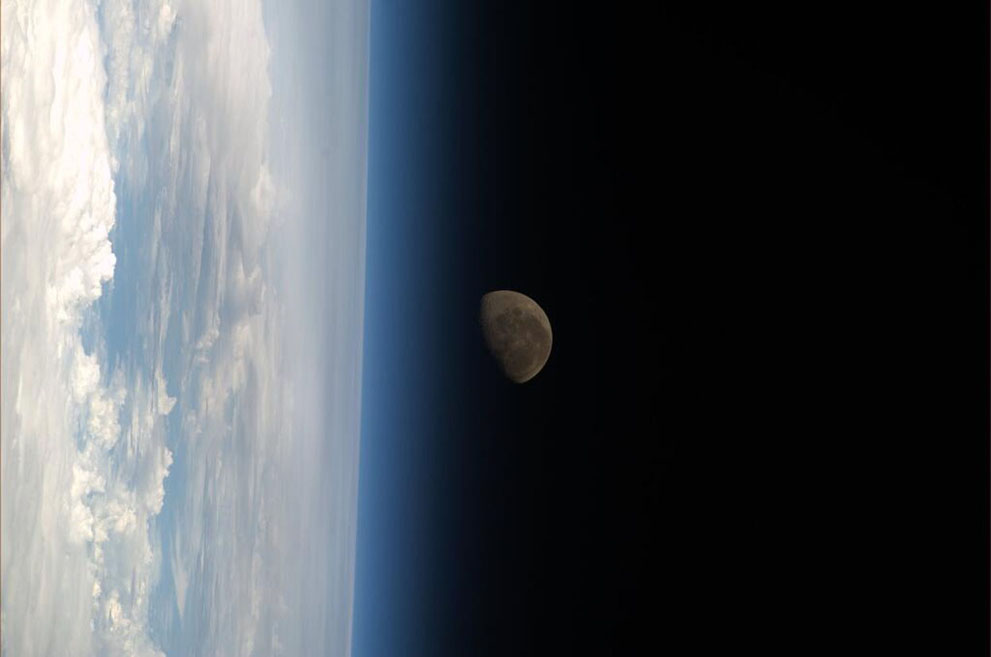May 23, 2014
A Dark Rock in Space

image by Koichi Wakata/NASA
Seen from Earth orbit the Moon is much darker than it seems in our telescopes. The reason is that in the eyepiece the Moon is huge and bright and there is nothing to compare it with. But this recent image from the International Space Station shows the Moon out in space above a cloudy Earth. Well, clouds are bright, with albedos/reflectivity up to 0.8 (80% of sunlight that falls on clouds is reflected away), and land often is bright (say 30%), but sea is dark (~6%). The average lunar reflectivity is about 12% because its surface materials are largely dark. On Earth, similar low reflectivity comes from conifer trees and old asphalt. Asphalt is, like the Moon, made of dark materials, and I would guess that conifers have low albedo because of shadowing, especially as seen from above. Observers at Saturn would need dark filters when observing Enceladus for its albedo is 99% (but at 10 A.U. the amount of Sun light is 100 times less bright than at Earth.)
Chuck Wood
Yesterday's LPOD: The Moat in My Eye
Tomorrow's LPOD: Before & After
COMMENTS?
Register, Log in, and join in the comments.



